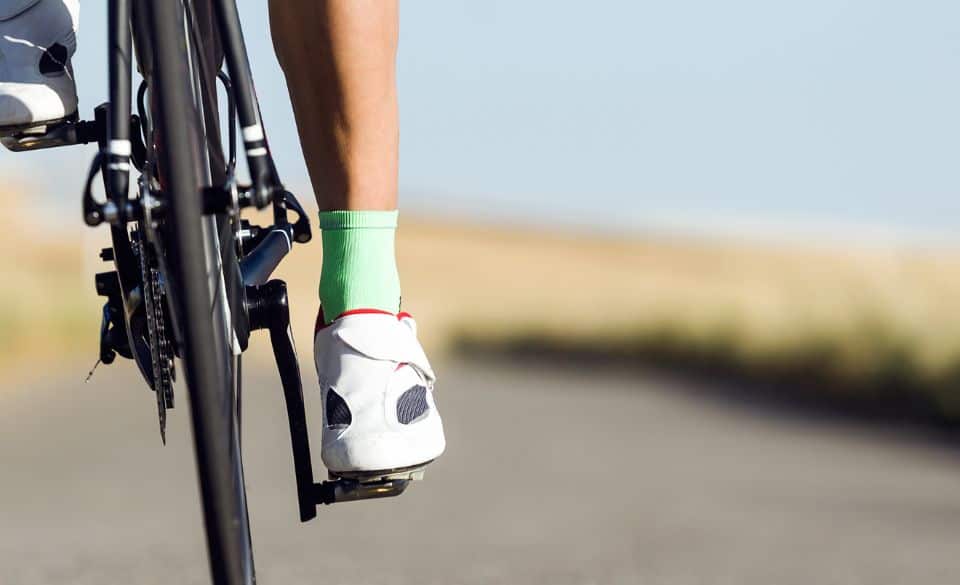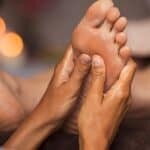
Pedal Pain: Understanding and Managing Metatarsalgia Cycling
Page Contents
As a cyclist, you may have experienced metatarsalgia at some point. It’s a common foot condition that can cause pain, numbness, and tingling in the ball of your foot. If you’re an avid cyclist, this can be a real nuisance. But don’t worry, we’ve got you covered. In this article, we’ll discuss what metatarsalgia is, whether you can cycle with it, how to prevent it, and the fastest way to cure it.
What Is Metatarsalgia?
Have you ever experienced a sharp pain or burning sensation in the ball of your foot during or after a cycling session? If so, you may be suffering from a common foot condition known as metatarsalgia.
Metatarsalgia is a condition that causes pain and inflammation in the ball of the foot, particularly around the metatarsal bones. It can be caused by a variety of factors such as ill-fitting shoes, high-impact activities, and repetitive stress. In fact, studies show that cycling is one of the leading causes of metatarsalgia in athletes.
One study published in the journal Sports Medicine found that up to 36% of cyclists experience foot pain, with metatarsalgia being one of the most common conditions reported. Another study in the Journal of Science and Medicine in Sport found that improper cycling shoe fit and cleat position were major contributors to metatarsalgia in cyclists.
So, if you’re experiencing pain or discomfort in the ball of your foot, it’s important to take action to prevent further aggravation of the condition. This may include investing in properly fitting cycling shoes and adjusting your cleat position to reduce pressure on the ball of your foot. Incorporating proper stretching and strengthening exercises into your cycling routine can also help prevent and alleviate symptoms.
Can I Cycle With Metatarsalgia?
If you’re experiencing metatarsalgia, you may be wondering if it’s safe to continue cycling. The answer is that it depends on the severity of your symptoms and how you manage the condition.
Mild cases of metatarsalgia may not prevent you from cycling, but it’s important to take steps to prevent further irritation of the affected area. This may include investing in proper footwear that provides adequate support and cushioning for the ball of your foot. It’s also important to adjust your cycling position to reduce pressure on the affected area.
However, if your symptoms are more severe, it may be best to take a break from cycling and allow the affected area to heal. Continuing to cycle with severe metatarsalgia can cause further damage and delay the healing process.
One study published in the Journal of the American Podiatric Medical Association found that cyclists with metatarsalgia experienced a significant improvement in symptoms after taking a break from cycling and following a stretching and strengthening exercise program. So, taking a break from cycling may actually be the fastest way to recover from metatarsalgia.
In conclusion, whether or not you can cycle with metatarsalgia depends on the severity of your symptoms and how you manage the condition. Mild cases may not prevent you from cycling, but it’s important to take preventative measures to avoid further irritation. However, if your symptoms are severe, taking a break from cycling may be necessary to allow the affected area to heal.
How To Prevent Metatarsalgia When Cycling
Invest in proper footwear: Wearing proper cycling shoes with adequate support and cushioning for the ball of your foot can help prevent metatarsalgia. Make sure your shoes fit properly and are not too tight, as this can cause additional pressure and irritation.
Adjust your cycling position: Adjusting your cycling position can also help prevent metatarsalgia. Make sure your saddle height is adjusted correctly, so that you’re not putting too much pressure on the balls of your feet. Consider adding cushioned insoles or arch supports to your shoes for added support.
Stretch and strengthen your feet: Strengthening and stretching your feet can also help prevent metatarsalgia. Exercises like toe curls, arch lifts, and calf raises can help improve foot strength and flexibility.
Take breaks: If you’re on a long ride, take breaks to give your feet a rest. This can help reduce the amount of pressure and irritation on the balls of your feet.
Consider using metatarsal pads: Metatarsal pads can provide additional support and cushioning to the ball of your foot, reducing the risk of developing metatarsalgia. These pads can be placed in your cycling shoes and come in a variety of shapes and sizes.
In conclusion, taking preventative measures like investing in proper footwear, adjusting your cycling position, stretching and strengthening your feet, taking breaks, and using metatarsal pads can help prevent metatarsalgia when cycling. Incorporating these practices into your routine can help keep your feet comfortable and healthy during your rides.
What Is The Fastest Way To Cure Metatarsalgia?
While there are steps you can take to prevent metatarsalgia, it’s important to seek treatment if you’re experiencing symptoms. If you’re dealing with metatarsalgia, here are some things you can do to help alleviate the pain and speed up the healing process:
Rest and ice: Taking a break from cycling and giving your feet time to rest can help reduce inflammation and pain. Applying ice to the affected area for 15-20 minutes several times a day can also help reduce swelling.
Massage and stretching: Massaging the affected area and gently stretching your feet can help improve circulation and reduce muscle tension. This can help speed up the healing process and reduce pain.
Pain relievers: Over-the-counter pain relievers like ibuprofen or naproxen can help reduce inflammation and relieve pain.
Footwear adjustments: Adjusting your footwear can also help alleviate metatarsalgia. Wearing shoes with good support, and a wide toe box can help reduce pressure on the ball of your foot. Also Cleat position can help quickly relieve pain while cycling.
Physical therapy: In more severe cases of metatarsalgia, physical therapy may be recommended. A physical therapist can help you develop a stretching and strengthening routine to improve foot health and reduce pain.
It’s important to note that the fastest way to cure metatarsalgia may vary depending on the severity of your condition. If you’re experiencing persistent pain or discomfort, it’s important to consult with a healthcare provider or podiatrist for a proper diagnosis and treatment plan.
Conclusion
Metatarsalgia can be a real nuisance for cyclists, but by investing in proper footwear, adjusting cleat position, taking breaks during long rides, and incorporating proper stretching and strengthening exercises into your cycling routine, you can prevent and alleviate symptoms. If you’re already experiencing metatarsalgia, it’s important to rest and allow the affected area to heal, as well as use ice packs, take anti-inflammatory medication, and consider physical therapy. With these tips, you can get back to enjoying your rides in comfort.


